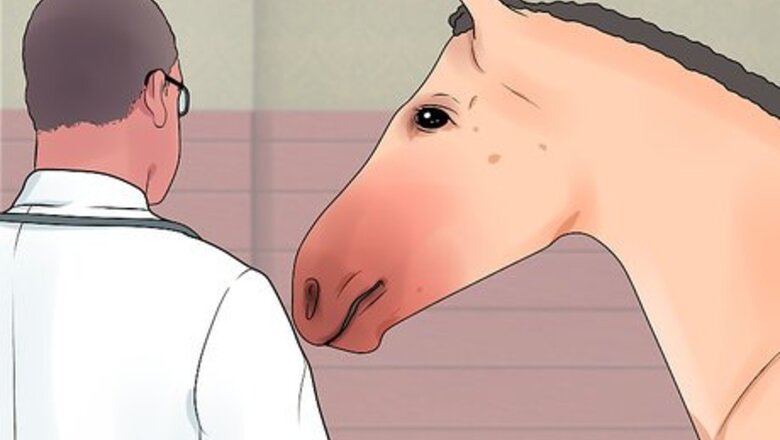
views
X
Research source
Uncastrated male horses have high levels of testosterone, which can make them difficult and even dangerous to handle. If you are thinking about getting your horse castrated, make sure that you schedule an appointment with your veterinarian. Castration is a surgical procedure that must be performed by a veterinarian.
Learning About the Procedure

Get your horse assessed by a veterinarian. Your vet will need to assess your horse before the procedure and talk to you about the options for castration surgery. Some horses will be able to be castrated under sedation while at home in his stall, while others will need to be castrated under full anesthesia in a clinical setting. If the horse is healthy with two scrotal testicles, then the veterinarian may opt to to sedate the horse and operate using local anesthesia. This may be done in the field or at the clinic. If the horse has a problem, then the operation must be done under full anesthesia and in a clinical setting. For example, if the horse has an undescended testicle, then the surgeon may need to perform abdominal surgery to find the missing testicle. The veterinarian will also need to decide if it will be better to perform the surgery with horse standing up or lying down. A horse must be at least 14.2 hand high to qualify for a standing surgery.
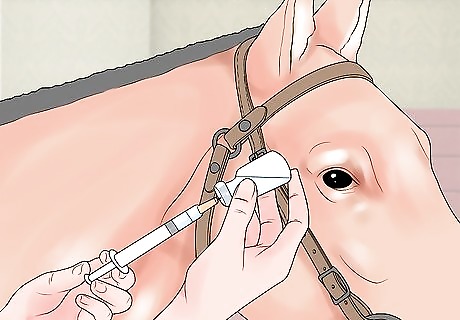
Sedate the horse. The veterinarian will administer a cocktail of sedative drugs intravenously and then wait until the drugs have taken full effect. This should take about 20 minutes.
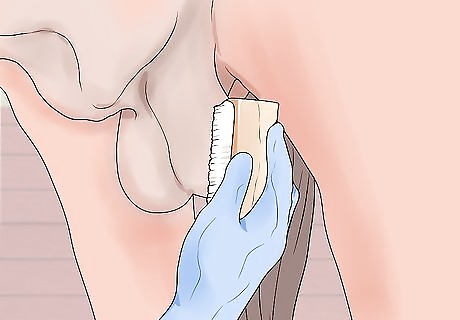
Clean the scrotal area. Next, the veterinarian will clean the scrotal area and belly with lots of water and a surgical scrub. This step is necessary to remove as much debris and bacteria as possible from the horse’s body and help prevent an infection.
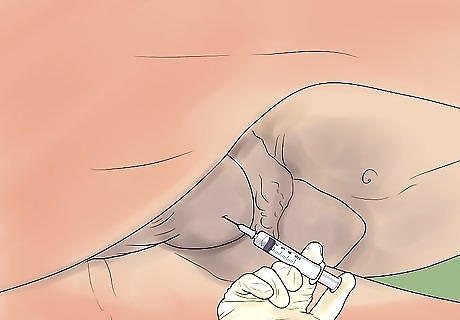
Inject the anesthetic into the testicles. Wearing sterile gloves, the surgeon will inject a local anesthetic into each testicle. The typical amount is 15 - 20 ml of mepivacaine. Then, the needle will be taken out slowly through the tissue while still injecting the local anesthetic. The anesthetic will numb the testicles and surrounding structures. It should take about five minutes to take full effect.

Make the incision. Once the testicles are numb the surgeon makes an incision with a sterile scalpel blade through the skin of the scrotum. The incision will need to be just large enough for the testicles to fit through.
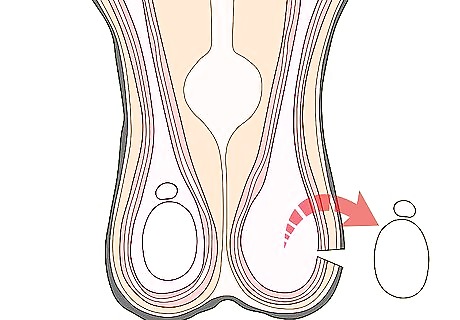
Pop out the testicles. The surgeons then applies pressure between the testicle and body in order to pop out the testicle. After the testicle is partway out of the scrotum, the surgeon will use his fingers to pull the testicle out the rest of the way. The surgeon then has the choice whether to apply emasculators. The emasculator is an instrument that crushes and severs the spermatic cord. If the surgeon applies emasculators, then they will either apply them across the whole structure or make an incision through the tough fibrous tunic that covers the testicle.
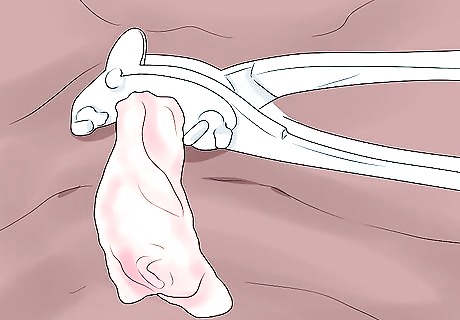
Seal the blood vessels. The veterinarian will leave the emasculator in place for one minute for young colts and at least two minutes for mature stallions. Leaving the emasculator in place for this amount of time will crush and seal the blood vessels. Next, the veterinarian will cut the cords that are on the side of the emasculator that is furthest away from the body. After the cords have been cut, the device will be slowly released.
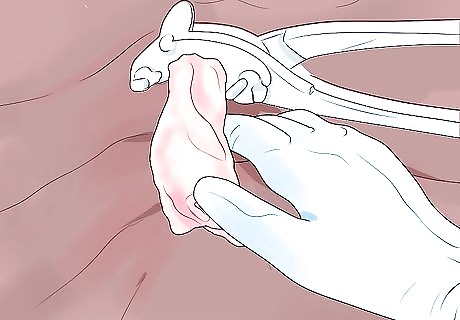
Check for signs of hemorrhage. Last of all, the veterinarian will inspect the stump of blood vessels for hemorrhage and apply ligatures to any bleeding vessels if necessary. If the surgeon finds that there is no hemorrhage, then the stump will be released and allowed to retract back into the scrotum.
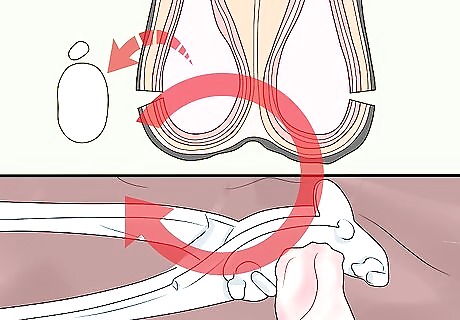
Repeat the procedure on the other side. After the first testicle has been removed, this procedure will need to be repeated on the other side for the other testicle.
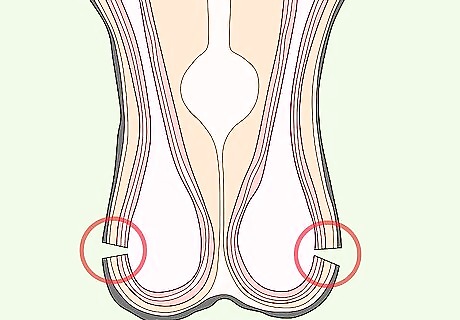
Leave the incisions open. The incision are often not sutured but left open to heal by secondary intention. This allows any seepage of fluid to drain away under gravity, rather than building up beneath the skin and causing swelling. However, this is at the surgeon's discretion. For mature stallions, the surgeon may close each layer of tissue with sutures. This can help to reduce the risk of postoperative bleeding in an active animal or to allow a rapid return to work.
Caring for Your Horse After Castration

Encourage your horse to rest. Following castration, it is important for your horse to rest in his stall for about 24 hours. Try to keep his area as quiet as possible and check on the horse now and then.
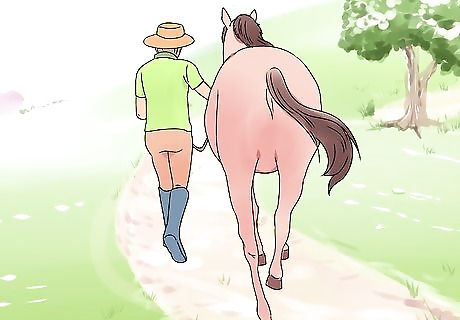
Walk your horse after 24 hours have passed. After your horse has had 24 hours of rest, then he should get some light exercise. Lead him around on a walk if he does not seem to want to walk on his own. This will help to encourage proper healing and drainage of fluid from the horse’s scrotum.
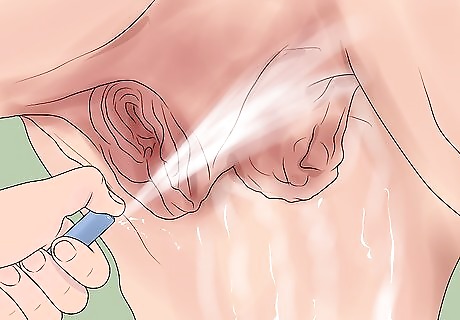
Keep his scrotal area clean. Check your horse’s scrotal area to make sure that is clean and does not look infected. Follow your veterinarian’s instructions for how to care for the surgical wound as well. You may be advised to keep the area clean with cold water hosing. To clean your horse's scrotal area, use a hose set on a low stream to remove any debris (hay, dirt, etc.) from the horse's scrotal region. Allow the water to run over the scrotal region until it looks clean. Watch for signs of infection. Check your horse's scrotal region a couple times per day until the wound has healed. When you check, look for any signs of infection such as redness, swelling, and/or pus.

Restrict your horse to light exercise for the first 7-10 days after surgery. Light exercise is advised for 7 - 10 days after surgery. After this time has passed, your horse can return to normal work. Make sure that you check with your veterinarian to be sure.
Considering Castration
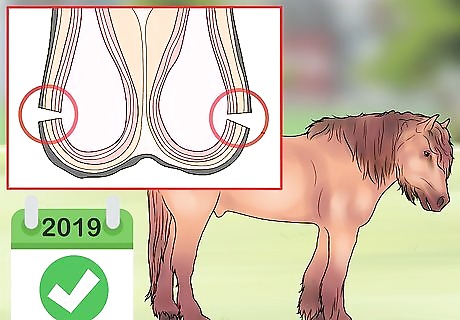
Castrate your horse in his first year of life. The majority of male horses are castrated as yearlings, or in the first year of life. This prevents the development of unwanted aggressive behavior and makes the animal easier to manage. Horses that are castrated in the first year of life tend to be taller when they are fully grown because testosterone is what stops their growth. Another advantage of castration at a young age is that the testicles are smaller and the blood supply to them is not as heavy as in a mature animal. This means that there is a lower risk of complications such as heavy bleeding after surgery.
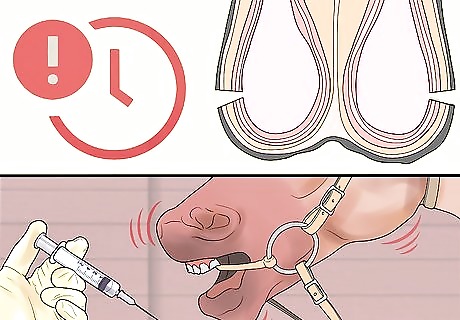
Be aware that delaying castration may cause behavioral issues. By delaying castration until two years of age, the horse may have a heavier more masculine appearance, which some people may prefer. But by delaying castration, there is also a risk that the horse will become aggressive or difficult to handle. These behavioral issues may even become established and continue after a horse has been castrated. An uncastrated horse may also cause trouble by challenging other male horses or pestering the mares.
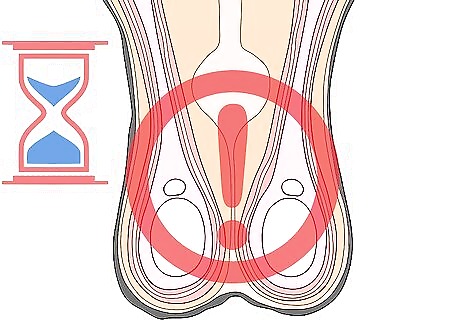
Consider the health risks involved in waiting to castrate. The risk of health complications rises with the age of the horse due to the larger blood vessels. For horses over three years of age, many veterinarians will advise full anesthesia under clinical conditions. This may be necessary so that the veterinarian will be equipped to deal with any unforeseen surgical complications.
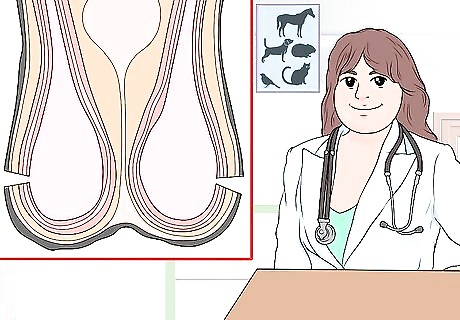
Remember that castration must be performed by a veterinarian. Do not attempt to castrate a horse on your own. Castration is a veterinary surgical procedure that must be performed by a qualified veterinarian. A lay person (one who is not a veterinarian) may face legal charges for castrating a horse. In addition to legal charges, a lay person could cause unnecessary pain and suffering to the horse. A lay person will also not be equipped to deal with any postoperative complications that may arise.




















Comments
0 comment